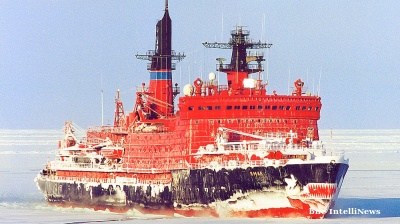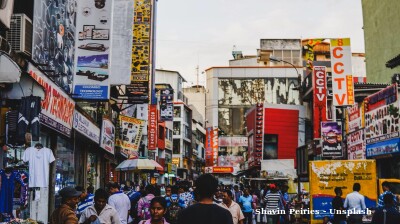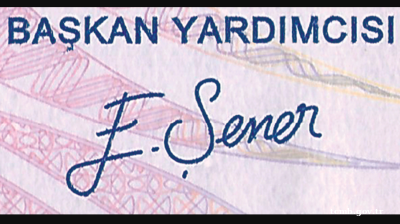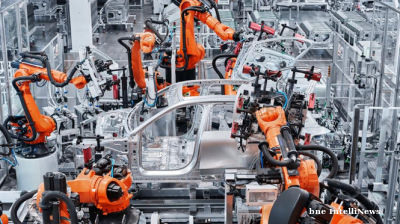Following the recent re-election of Indian Prime Minister Narendra Modi’s Bharatiya Janata Party, he unusually chose Moscow for his first foreign visit.
“Modi’s decision to make wartime Moscow the destination for his first post-election trip abroad breaks with tradition that typically sees newly-elected Indian leaders go to neighbouring countries such as Bhutan, the Maldives or Sri Lanka. The likely reason for the switch is Moscow’s increasing dependence on Beijing – a dependence that has caused some alarm in New Delhi. Relations between India and China are often strained, and New Delhi would not want Russia to become too beholden to China,” said Alexandra Prokopenko and Alexander Kolyandr in a note for The Bell.
Modi arrived in the Russian capital on July 8 for two days of talks, as Russia has emerged as a key Indian trade partner, but in an increasingly uncomfortable relationship as Delhi tries desperately not to get dragged into the middle of the East-West conflict and the war in Ukraine.
"I look forward to reviewing all aspects of bilateral cooperation with my friend President Vladimir Putin and sharing perspectives on various regional and global issues," Modi noted in a statement published on the Indian Foreign Ministry’s website before he arrived in what will be his first face-to-face encounter with Putin since the Russian leader went to Delhi in 2021 before the full-scale invasion of Ukraine.
Russia has become an increasingly important trade partner for India and the main supplier of its energy. Modi's official visit to Russia is part of the 22nd annual bilateral summit.
"The special and privileged strategic partnership between India and Russia has advanced over the past ten years, including in the areas of energy, security, trade, investment, health, education, culture, tourism and people-to-people exchanges," the Indian premier specified.
Rising geopolitical importance
India’s importance on the international stage has been rising as its economy booms. As bne IntelliNews reported, India is now the third largest economy in the world on a PPP (purchase power parity) basis and Russia just overtook Japan to become the fourth largest economy in the world. China is the biggest, followed by the US, which means three of the four dominant economies are BRICS nations.
Putin and Chinese President Xi Jinping have been promoting the expanding BRICS+ organisation as a geopolitical counterweight to the G7 and “US-led global hegemony” as they describe it, but Modi has resisted the aggressive confrontational tone struck by the Sino-Russian pair.
At last year’s BRICS summit that saw several new members added, India was pushing for a slower pace of expansion and wants the requirements for membership more clearly defined. It would also like to see the organisation focus more on investment and trade than politics, a view shared by Brazil, which has also adopted a more dovish stance than Beijing or Moscow. Several more members are due to join the Sino-Russian dominated BRICS+ body this October 22-24 that will be held in the Russian city of Kazan.
However, only weeks after the BRICS summit last year, India hosted the G20 summit where Delhi took the lead. The increasingly important group that more directly challenges the G7 predominance – and includes the G7 countries amongst its members – welcomed the African Union, which includes all 55 African states, to its membership making it by far the most representative body for the emerging world nations.
Modi triumphantly managed to focus the G20 agenda to a much more peaceful agenda that focuses on aiding the countries of the Global South to close the gap with the developed Western world and increase prosperity for all. Pointedly both Xi and Putin chose to personally stay away from the G20 meeting.
At the G20 summit India also announced the new India-Middle East-Europe Economic Corridor (IMEC) corridor project together with the Kingdom of Saudi Arabia (KSA) that would link India’s markets, via the Middle East and Israel, to Europe.
This project openly challenges China’s Belt and Road Initiative (BRI) and also brings India and KSA closer together, but specifically excludes Russia, China and notably, Iran, as Crown Prince Mohammed bin Salman (MbS) of Saudi Arabia also attempts to find some balance between backing Russia – KSA also became a member of the BRICS+ organisation a few weeks earlier, but joined the IMEC that also has Washington’s approval – as Riyadh is also trying to find a similar middle path between the warring factions.
Modi is clearly trying to sand off the rough edges with his prickly BRICS partners. Only a week earlier the Foreign Ministers of India and China, Subrahmanyam Jaishankar and Wang Yi, agreed to try and “resolve” their long-running border dispute during the Shanghai Cooperation Organization (SCO) hosted in the Kazakh capital of Astana.
"The two ministers agreed that maintaining the current situation in the border areas is not in the interests of either side. <...> Both ministers agreed to intensify meetings of diplomatic and military officials to continue discussions and resolve outstanding issues as soon as possible," the Indian Foreign Ministry reported.
According to the Indian Foreign Ministry, the countries are “committed to restoring peace on the border” and “removing obstacles to normalisation of bilateral relations.” The foreign ministers exchanged views on the early resolution of issues along the Line of Actual Control in Eastern Ladakh.
The border dispute has rankled relations for years and led to a hilarious exchange of maps last year. BRICS+ unity was undermined last September when China issued an updated version of its “standard” map showing its borders that caused uproar in New Delhi as it included the territories on the disputed border, marking them as inside China.
The Indian Foreign Ministry responded by issuing its own “updated” borders map that marked “India 3.0” as including all of China as Indian territory, up to the Pacific Ocean and South China Sea, as well as Taiwan.

The map is an extension of China’s highly controversial “nine-dash line” that encompasses China’s hotly disputed claims to territory in the South China Sea, and the expanded borders in the new map have already been dubbed the “ten-dash line” thanks to the new territories claimed by Beijing.
Relations between Moscow and Delhi are a lot more civilised, but analysts say Modi is concerned about Beijing’s increasing dominance of the Sino-Russian relationship and is clearly hoping to bolster mutual ties between India and Russia to balance the difficult relations with Beijing.
And Modi is probably pushing at an open door. Putin’s recent tour to first North Korea, long a Chinese vassal state, and then Vietnam, also seen as belonging to Beijing’s sphere of influence, were widely seen as a tempered challenge to China’s dominance in the Asian sphere as the Kremlin attempted to assert from modicum of independence from China and reinforce its own interests in China’s backyard. Putin was well received in Hanoi, which is also interested in boosting its alliances with a powerful country like Russia to counterbalance China’s dominance in SE Asia. However, for Putin, to bolster Russia's relations with India, independently from China, but remaining within the BRICS framework, is far more important than cosying up to the North Korean strongman, Kim Jong Un or the communist-led Vietnam.
Ukraine war
Trade, energy and foreign exchange are likely to dominate Modi’s discussions with Putin, but the war will feature at the top of the agenda. As bne IntelliNews reported, the talk of ceasefire talks has accelerated in just the last week. Hungarian Prime Minister Viktor Orban paid an unexpected visit to Moscow on July 5 to meet Putin as part of his self-declared “peace mission” that brought down a storm of condemnation from the EU elite. Orban is reported on his way to Beijing on July 8 in the third leg of his tour that started in Kyiv last week.
To add to add to the momentum for a negotiated end to the hostilities, Turkish President Recep Tayyip Erdogan offered to mediate at the weekend and on July 7 Dimitar Glavchev, Bulgaria's interim Prime Minister, proposed starting peace talks between Ukraine and Russia at the Nato summit in Washington on July 9-11, reports European Pravda, with Sofia acting as a mediator. "What could be better than that? And that is what I will propose; there is no problem,” Glavchev said.
Modi is not likely to make much progress on bring about an end to the fighting but Putin is likely to use the visit as a platform to repeat his own offer to start negotiations, as long as “the realities on-the-ground” are taken into account; most analysts equate this formulation to little more than a call for Kyiv’s capitulation. For his part, Modi emphasised that India and Russia "seek to play a supportive role for a peaceful and stable region."
India has been a lukewarm supporter of Russia’s war in Ukraine. In a September 2022 meeting between Putin and Modi at a regional summit in Uzbekistan, the Russian president told Modi he understood he had "concerns" about the conflict and that Modi wanted it to end "as soon as possible," but didn’t go into depth.
The war talks are likely to focus on more practical issues. Earlier this year, India said it was pushing Russia to release some of its citizens who had signed up for "support jobs" with the Russian army, following reports some were left stranded in Russian border towns and forced to fight in Ukraine.
Trade relations
The most complicated part of the talks will concern the increasingly one-way trade between Russia and India. Pre-war India imported almost no Russian oil. But since the twin oil sanctions were imposed on Russia at the end of 2022, India has become the second biggest – and in some months the biggest – importer of Russian oil, after China.
India is lapping up Russia’s deeply discounted oil, which it is refining and selling on to the European markets for a handsome profit. However, the trade is almost all one-way as India produces little that Russia wants and the rupee is not a convertible currency. Trade between India and Russia reached a record $65.7bn in the 2023-2024 financial year, according to India’s Trade Ministry, but Indian exports to Russia (pharmaceuticals, chemicals, electrical and mechanical equipment, iron and steel) totalled a mere $4.26bn, vs imports from Russia were $61.44bn.
India is running a massive trade deficit with Russia, which has seen a mountain of rupees accumulate in the special “Vostro” accounts – a complicated bank account system to manage India’s foreign trade. The key problem is that to convert rupees to any other currency the trade has to pass through a conversion to US dollars step that makes the trade subject to sanctions and so off limits to Russia.
The two nations have explored various workaround schemes, like using the United Arab Emirates (UAE) dirham, which is freely convertible, or simply paying for Russian oil in rubles: India’s Reliance Industries signed a one-year contract with Russia’s state-owned Rosneft in May to purchase at least 3mn barrels of crude a week, in a deal where the price was denominated in rubles. But thanks to the massive trade imbalance, India simply lacks enough foreign exchange to pay for its imports in anything other than rupees.
In April, an Indian official said total Russian investments in India amounted to $1.26bn, The Bell reports. However, others believe the figure is much larger, with some estimates going as high as $12bn. Either way, they include Rosneft’s 49% stake in India’s Essar Oil; a joint Russia-India venture for the construction of BrahMos cruise missiles; and investments by Russia’s state nuclear corporation, Rosatom, into Indian nuclear power stations. However, no one is sure just how big the rupee mountain has become.
“We do not know the exact amount currently in limbo in Indian accounts, but two Russian officials told The Bell the total was less than $10bn,” The Bell reports.
Arms
Another Russian drain on India’s limited foreign exchange reserves is weapons. India has long been one of Russia’s best arms export customers. However, more recently India has been trying to diversify its supplies away from Moscow – but that is going to be a long slow process.
The Indian army is primarily equipped with Russian Т-72М1 and Т-90С tanks. The navy has two aircraft carriers, the Russian-made Vikramaditya and the Vikrant, which although Indian built incorporates many imported Russian components including the aviation complex. And 71% of the air force’s attack fleet was made in Russia, The Bell reports.
“All this makes a complete breakdown of military cooperation impossible. Existing systems must be maintained, and even if New Delhi wanted to switch to alternatives from Japan, France, the US or Australia, such a pivot would take many years,” says The Bell.
Thanks to those border tensions with an increasingly aggressive and militarised China, the supply of Russian weapons is a pressing issue, and it has been interrupted as Russia slows exports to India to cover its own needs in the war with Ukraine.
Like some worry that Beijing will attack Taiwan while the US is distracted by supporting Ukraine, Delhi is also worried that China could take advantage of the same distraction to seize its disputed border regions with China, and so needs Russia’s arms supplies to shore up its own security.
Features

Ambition, access and acceleration – Uzbekistan’s Startup Garage opens free academy for entrepreneurship
Aim is to train 50,000 young founders by 2030.

Ukraine’s growing energy crisis promises a cold and dark winter
Since the summer, Kyiv has changed tactics. Given the almost complete failure of Western oil sanctions to curb Russian oil exports, it has been targeting Russian oil refineries. The Kremlin has struck back, targeting Ukraine's power system.

Russia, China sign off on Northern Route shipping deal to slash global freight times
Russia and China have signed a landmark agreement to develop and commercialise the Northern Sea Route (NSR), after Beijing tested the route last month, that could slash Europe-Asia cargo transit times and challenge the primacy of the Suez Canal.

Sri Lanka’s economic escape
Sri Lanka’s recovery over the past year reads like a narrow escape rendered into a cautious, albeit unfinished success story.



